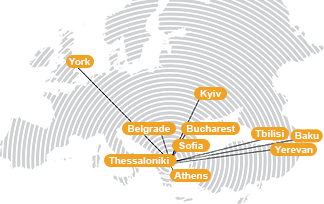Nearly all formal models for the behaviour of software systems take a bottom-up approach to the hierarchical structures of the systems, and so it is difficult to fit these models into the usual top-down approaches to developing such systems. This talk will present a formal model that is top-down, and so fits the development approaches better. It will describe the key features of this model, and particularly the algebra (known as the data flow algebra) that forms its core, and the properties of the model that follow from this algebraic structure.
The most important of these properties is the reconstruction property for systems: namely, that if components of a system are constructed to implement the behaviour specified in a model for the whole system, then when they are assembled the resulting system will have exactly the specified behaviour. Some examples will be given of system models that do not possess this property, to illustrate the conditions needed to ensure that it should hold, and an outline will be given of a proof that under these conditions the reconstruction property does indeed hold.
While much of the material described in this talk is mathematical in nature, the emphasis will be on the significance of the underlying concepts rather than on the mathematical details, so as to make the talk as accessible as possible to a general audience.






